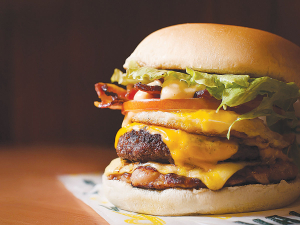Sugar hit
OPINION: Winston Peters has described the decision to sell its brand to Lactalis and disperse the profit to its farmer shareholders as a 'short sighted sugar hit'.
 McDonald's annual shopping list, released this month, shows the fast-food chain used $214m worth of NZ products in its local restaurants.
McDonald's annual shopping list, released this month, shows the fast-food chain used $214m worth of NZ products in its local restaurants.
Fast-food giant McDonalds spent a record $598 million last year on New Zealand milk, cheese, and other primary industry ingredients.
Its annual shopping list, released this month, shows the fast-food chain used $214m worth of NZ products in its local restaurants. A whopping $384 million of produce was exported to other McDonald’s markets. The total spend was $52 million more than in 2021.
Nearly 7 million litres of fresh milk was sourced from dairy farmers – the equivalent of 246 Fonterra milk tankers and enough to fill Kelly Talton’s Stingray Bay aquarium tank 19 times, the company says.
Nearly 2 million kilograms of cheese and other dairy products were used locally, along with 11.6 million kg of cheese exported – the equivalent weight of 6500 empty shipping containers.
The company also used 900,000kg of lettuces and 12 million kg of potatoes in its local restaurants.
McDonalds sources its cheeses from Fonterra’s Eltham site in Taranaki. It says New Zealand farmers are also strategically important suppliers to McDonald’s worldwide. Kiwi produce is exported to McDonald’s markets including Australia, the Pacific Islands, Asia and the United States.
“McDonald’s has long recognised New Zealand as one of its top global suppliers of quality beef and dairy. It’s great to be able to supply a local menu where around 90% of the ingredients are sourced from across Aotearoa, and to share this quality produce with McDonald’s markets around the world,” says managing director NZ and Pacific Islands, Kylie Freeland.
“While we’re a small market in terms of our number of restaurants in the McDonald’s world, New Zealand is amongst the top 10 countries that supply beef to McDonald’s. Globally, we have several commitments around sustainable beef production, and the climate, which means we’re working closely with our local suppliers and industries to help encourage continuous improvement and making a positive impact on the planet.”
Craighead Diocesan, Darfield High School and Christchurch Boys' High School took out the three age groups at the Canterbury Clash of the Colleges, which was held at the recent Ashburton A&P Show.
The New Zealand Merino Company (NZM) is expanding its collaboration with TextileGenesis to deliver full traceability for 100% of ZQ certified wool and ZQRX regenerative wool.
According to Federated Farmers, Environment Southland has mishandled the consent process for Waituna Lagoon, leaving the community with numerous bad outcomes.
Metallica's charitable foundation, All Within My Hands (AWMH), teamed up with Meet the Need this week for a food packing event held at the New Zealand Food Network warehouse in Auckland.
After two years, Alliance Group has returned to profit.
According to Zespri's November forecast for the 2025/26 season, returns are likely to be up for all fruit groups compared to the last forecast in August.